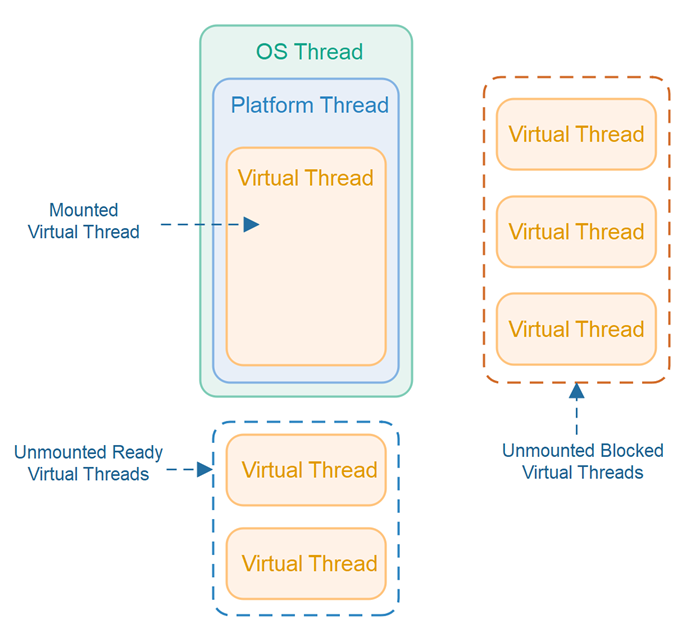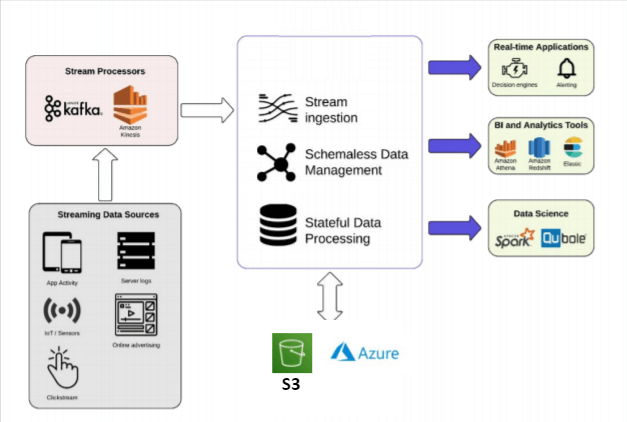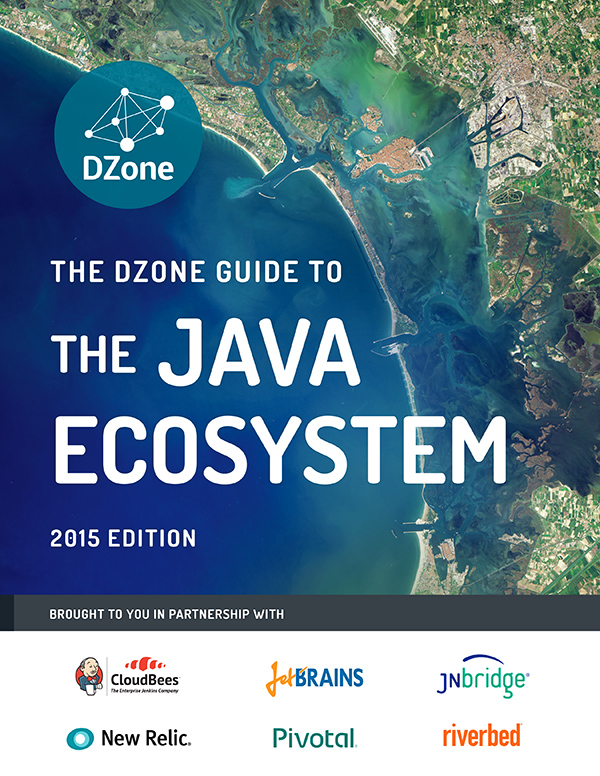The Java ecosystem is experiencing a renaissance. Once perceived by some as a slow-moving giant, Java has transformed into a dynamic, rapidly evolving platform. Thanks to the six-month release cadence and groundbreaking projects from the OpenJDK community, staying current with Java news is more critical than ever. From the revolutionary concurrency models introduced in Project Loom to the exciting integration of Artificial Intelligence, Java is solidifying its position as a top choice for building high-performance, scalable, and intelligent applications.
This article dives deep into the most significant developments shaping the Java landscape today. We’ll explore the practical implications of virtual threads and structured concurrency, examine the evolution of dominant frameworks like Spring and Jakarta EE, and venture into the new frontier of AI development with Java. Whether you’re a seasoned architect, a mid-level developer, or a self-taught enthusiast eager for Java wisdom tips, this guide will provide you with the actionable insights and code examples needed to navigate the modern Java world.
The Concurrency Revolution: Unpacking Project Loom
For years, Java’s concurrency model has been powerful but complex, built around heavyweight, OS-level platform threads. This paradigm often led to resource-intensive applications and convoluted asynchronous code using `CompletableFuture` or reactive frameworks. The latest Java SE news, particularly surrounding Java 21 news, centers on the game-changing features from Project Loom news, which are now finalized and production-ready.
Embracing Lightweight Concurrency with Virtual Threads
Virtual threads are the cornerstone of Project Loom. Unlike platform threads, which map one-to-one with operating system threads, virtual threads are lightweight execution threads managed by the JVM itself. This means you can create millions of them without exhausting system resources. This is a massive leap forward for I/O-bound applications, such as microservices handling numerous network requests or data-intensive applications interacting with databases.
The beauty of virtual threads lies in their simplicity. They allow developers to write straightforward, synchronous-style, blocking code that the JVM executes with the scalability of asynchronous code. Consider a simple web server that needs to handle many concurrent requests.
import java.time.Duration;
import java.util.stream.IntStream;
public class VirtualThreadsDemo {
public static void main(String[] args) throws InterruptedException {
System.out.println("Starting platform threads...");
long platformStartTime = System.currentTimeMillis();
// This would likely crash with an OutOfMemoryError on most systems
// try (var executor = Executors.newCachedThreadPool()) {
// IntStream.range(0, 100_000).forEach(i -> {
// executor.submit(() -> {
// Thread.sleep(Duration.ofSeconds(1));
// System.out.println("Task " + i + " done.");
// return i;
// });
// });
// }
System.out.println("Starting virtual threads...");
long virtualStartTime = System.currentTimeMillis();
// Create a virtual thread for each task
try (var executor = java.util.concurrent.Executors.newVirtualThreadPerTaskExecutor()) {
IntStream.range(0, 100_000).forEach(i -> {
executor.submit(() -> {
// Simulate I/O-bound work
try {
Thread.sleep(Duration.ofSeconds(1));
} catch (InterruptedException e) {
// Handle exception
}
// System.out.println("Virtual task " + i + " done.");
});
});
} // executor.close() automatically waits for all tasks to complete
long virtualEndTime = System.currentTimeMillis();
System.out.printf("Virtual threads completed 100,000 tasks in %d ms%n", (virtualEndTime - virtualStartTime));
}
}In this example, creating 100,000 platform threads would almost certainly crash the JVM. However, using `Executors.newVirtualThreadPerTaskExecutor()` allows us to effortlessly launch 100,000 tasks, each running on its own virtual thread. The JVM efficiently manages these, parking them when they block on I/O (like `Thread.sleep`) and unparking them when ready, all without consuming precious OS threads. This is a monumental piece of Java concurrency news.
Simplifying Error Handling with Structured Concurrency
While virtual threads make it easy to start concurrent operations, managing them—especially their lifecycle and error handling—can still be tricky. This is where structured concurrency comes in. It treats multiple concurrent tasks running in different threads as a single unit of work. If one task fails, you can easily cancel the others. If the main control flow is interrupted, all subtasks are automatically cleaned up.
The `StructuredTaskScope` API is the primary tool for this. It ensures that the lifetime of a concurrent operation is confined to a specific syntactic block.
import java.util.concurrent.Future;
import java.util.concurrent.StructuredTaskScope;
import java.time.Instant;
public class StructuredConcurrencyDemo {
// A method that simulates fetching user data
String findUser() throws InterruptedException {
Thread.sleep(100); // Simulate network latency
return "User_Data_123";
}
// A method that simulates fetching an order
String fetchOrder() throws InterruptedException {
Thread.sleep(150);
// Uncomment to simulate a failure
// if (true) throw new IllegalStateException("Order service failed");
return "Order_Details_456";
}
// A class to hold the combined result
record Response(String user, String order) {}
public Response handle() throws InterruptedException {
try (var scope = new StructuredTaskScope.ShutdownOnFailure()) {
// Fork two concurrent tasks
Future<String> userFuture = scope.fork(this::findUser);
Future<String> orderFuture = scope.fork(this::fetchOrder);
// Wait for both to complete or for one to fail
scope.join();
scope.throwIfFailed(); // Throws exception if any subtask failed
// If we reach here, both succeeded. Combine results.
return new Response(userFuture.resultNow(), orderFuture.resultNow());
}
}
public static void main(String[] args) throws InterruptedException {
var demo = new StructuredConcurrencyDemo();
System.out.println("Handling request at: " + Instant.now());
Response response = demo.handle();
System.out.println("Got response: " + response);
System.out.println("Finished at: " + Instant.now());
}
}Here, `findUser()` and `fetchOrder()` run concurrently. The `scope.join()` call waits for them. If `fetchOrder()` were to throw an exception, `scope.throwIfFailed()` would rethrow it, and the `ShutdownOnFailure` policy would automatically cancel the `findUser` task if it were still running. This dramatically simplifies concurrent logic, making it more robust and easier to reason about, which is significant Java virtual threads news.
Frameworks Reimagined: Spring, Jakarta EE, and Native Compilation

The core platform isn’t the only source of exciting Java ecosystem news. The frameworks that build upon it are also evolving at a breakneck pace. The latest Spring news and Jakarta EE news highlight a focus on modernization, performance, and developer experience.
The Foundational Shift to Jakarta EE
One of the most significant long-term changes has been the transition from Java EE to Jakarta EE, which involved moving the core enterprise APIs from the `javax.*` namespace to `jakarta.*`. This change, driven by the move to the Eclipse Foundation, is now fully embraced by the ecosystem. Spring Boot 3 and newer versions of popular libraries like Hibernate are built on this new foundation.
For developers, this means updating imports in their code. While seemingly minor, it’s a crucial step for staying current. Any new project should start with the `jakarta.*` namespace.
import jakarta.persistence.Entity;
import jakarta.persistence.Id;
import jakarta.persistence.GeneratedValue;
import jakarta.persistence.GenerationType;
import org.springframework.data.jpa.repository.JpaRepository;
import org.springframework.web.bind.annotation.GetMapping;
import org.springframework.web.bind.annotation.RestController;
import java.util.List;
// Using jakarta.persistence annotations
@Entity
public class Product {
@Id
@GeneratedValue(strategy = GenerationType.IDENTITY)
private Long id;
private String name;
// Getters and setters
}
// Spring Data JPA repository interface
interface ProductRepository extends JpaRepository<Product, Long> {}
// A simple Spring Boot REST Controller
@RestController
class ProductController {
private final ProductRepository repository;
ProductController(ProductRepository repository) {
this.repository = repository;
}
@GetMapping("/products")
public List<Product> getAllProducts() {
return repository.findAll();
}
}This code snippet, typical of a modern Spring Boot application, uses `jakarta.persistence.Entity` instead of the old `javax.persistence.Entity`. This reflects the latest Hibernate news and Spring Boot news, where Jakarta EE 10 is the baseline.
Native Compilation and Performance Gains
Another major trend is the rise of Ahead-of-Time (AOT) compilation to native executables using GraalVM. Spring Boot 3 has first-class support for this, allowing developers to compile their applications into self-contained native binaries. These binaries offer near-instantaneous startup times and significantly lower memory footprints, making them ideal for serverless functions and containerized environments. This focus on Java performance news is a direct response to the needs of modern cloud-native architectures.
Java Enters the AI Arena: The Rise of Intelligent Applications
Perhaps the most exciting recent development is Java’s rapid embrace of AI. For a long time, Python dominated the AI/ML landscape. However, new libraries are making it easier than ever to build sophisticated AI-powered applications in Java. This wave of Java low-code news and AI integration is attracting a new generation of developers.
Introducing Spring AI and LangChain4j
Two prominent projects are leading the charge: Spring AI and LangChain4j. Both aim to simplify the development of applications that use Large Language Models (LLMs). They provide high-level abstractions over various AI model providers (like OpenAI, Hugging Face, and local models via Ollama), streamlining tasks like:
- Sending prompts and receiving responses.
- Implementing Retrieval-Augmented Generation (RAG) to query your own data.
- Connecting multiple AI services in a chain.
The latest Spring AI news shows a project maturing quickly, with support for multi-modality, vector databases, and much more. It integrates seamlessly into the Spring ecosystem you already know.
A Practical AI Example with Spring AI

Let’s see how simple it is to create a service that can answer questions using an LLM. With Spring AI, you can add an AI client to your application with just a few lines of configuration and code.
First, you’d add the necessary dependencies to your `pom.xml` (from the latest Maven news) or `build.gradle` (Gradle news).
Then, you can create a service that uses the `ChatClient` to interact with an AI model.
import org.springframework.ai.chat.client.ChatClient;
import org.springframework.stereotype.Service;
@Service
public class AiAssistantService {
private final ChatClient chatClient;
// The ChatClient is configured automatically by Spring Boot
public AiAssistantService(ChatClient.Builder chatClientBuilder) {
this.chatClient = chatClientBuilder.build();
}
public String getJavaFact(String topic) {
// Use the fluent API to build the prompt
return this.chatClient.prompt()
.user(userSpec -> userSpec
.text("Tell me one interesting fact about {topic} in Java.")
.param("topic", topic)
)
.call()
.content(); // Get the string content of the response
}
}
// Example usage in a controller or test
// AiAssistantService service = ...;
// String fact = service.getJavaFact("virtual threads");
// System.out.println(fact);This code is clean, expressive, and abstracts away all the complexities of HTTP calls, API keys, and JSON parsing. This accessibility is a massive win for the Java ecosystem news, demonstrating that Java is a serious contender for building the next generation of AI-driven software.
Ecosystem Vitality: JVMs, Tooling, and Best Practices
A language is only as strong as its ecosystem. Here, Java continues to shine with a diverse range of JVM distributions, powerful build tools, and a mature testing culture.
The Thriving JVM Landscape
The days of a single, proprietary Java are long gone. The OpenJDK news is that it’s the reference implementation, but developers have a wide choice of production-ready, TCK-certified builds. This includes:

- Oracle Java: The official commercial build from Oracle.
- Adoptium Temurin: A community-led, vendor-neutral build from the Eclipse Foundation.
- Azul Zulu: A popular choice offering commercial support and performance-optimized builds.
- Amazon Corretto: Amazon’s no-cost distribution with long-term support.
- BellSoft Liberica JDK: Another excellent OpenJDK build with wide platform support.
This diversity is a strength, promoting competition and ensuring the long-term health and availability of the JVM, which is always positive JVM news.
Modern Tooling and Testing
The build and testing tools continue to evolve. The latest JUnit news revolves around the powerful features of JUnit 5, like parameterized tests and dynamic tests. Mockito news highlights its deep integration with JUnit 5 and its ability to mock final classes and methods, reducing boilerplate. Build tools like Maven and Gradle are constantly improving dependency management and build speeds, with Gradle’s Kotlin DSL gaining popularity for its type-safety and superior IDE support.
Best Practices for the Modern Java Developer
- Embrace the New Release Cadence: Don’t get stuck on old LTS versions like Java 8 or Java 11. The features in Java 17 and especially Java 21 offer significant performance and productivity benefits.
- Use Virtual Threads for I/O-Bound Tasks: If your application spends most of its time waiting for network or database responses, refactoring to use virtual threads can dramatically improve throughput and scalability with minimal code changes.
- Prefer Structured Concurrency: For new concurrent code, use `StructuredTaskScope` to avoid the pitfalls of unmanaged, “fire-and-forget” threads. It makes your code safer and more maintainable.
- Stay Current on Frameworks: Keep an eye on Spring Boot news and Jakarta EE news. Upgrading regularly prevents technical debt and gives you access to the latest performance improvements and security patches.
Conclusion: Java’s Bright and Innovative Future
The narrative around Java has fundamentally shifted. It is no longer just a language for legacy enterprise systems; it is a modern, high-performance platform at the forefront of innovation in concurrency, cloud-native development, and even artificial intelligence. The introduction of virtual threads and structured concurrency in Java 21 has solved long-standing challenges in building scalable systems. Meanwhile, the evolution of frameworks like Spring and the emergence of powerful AI libraries like Spring AI are opening up new possibilities for developers.
The key takeaway from the recent wave of Java news is that this is an incredible time to be a Java developer. The platform is evolving faster than ever, the ecosystem is vibrant, and the tools are becoming more powerful and intuitive. The next step is to start exploring: update your JDK, experiment with virtual threads in a side project, and try building a simple AI-powered service. The future of Java is here, and it’s more exciting than ever.

